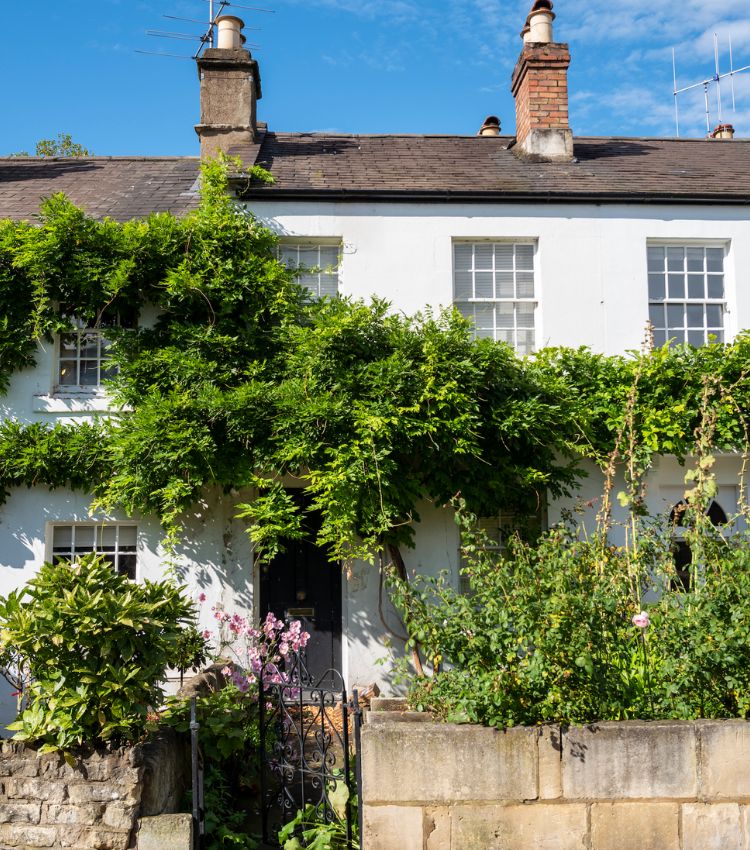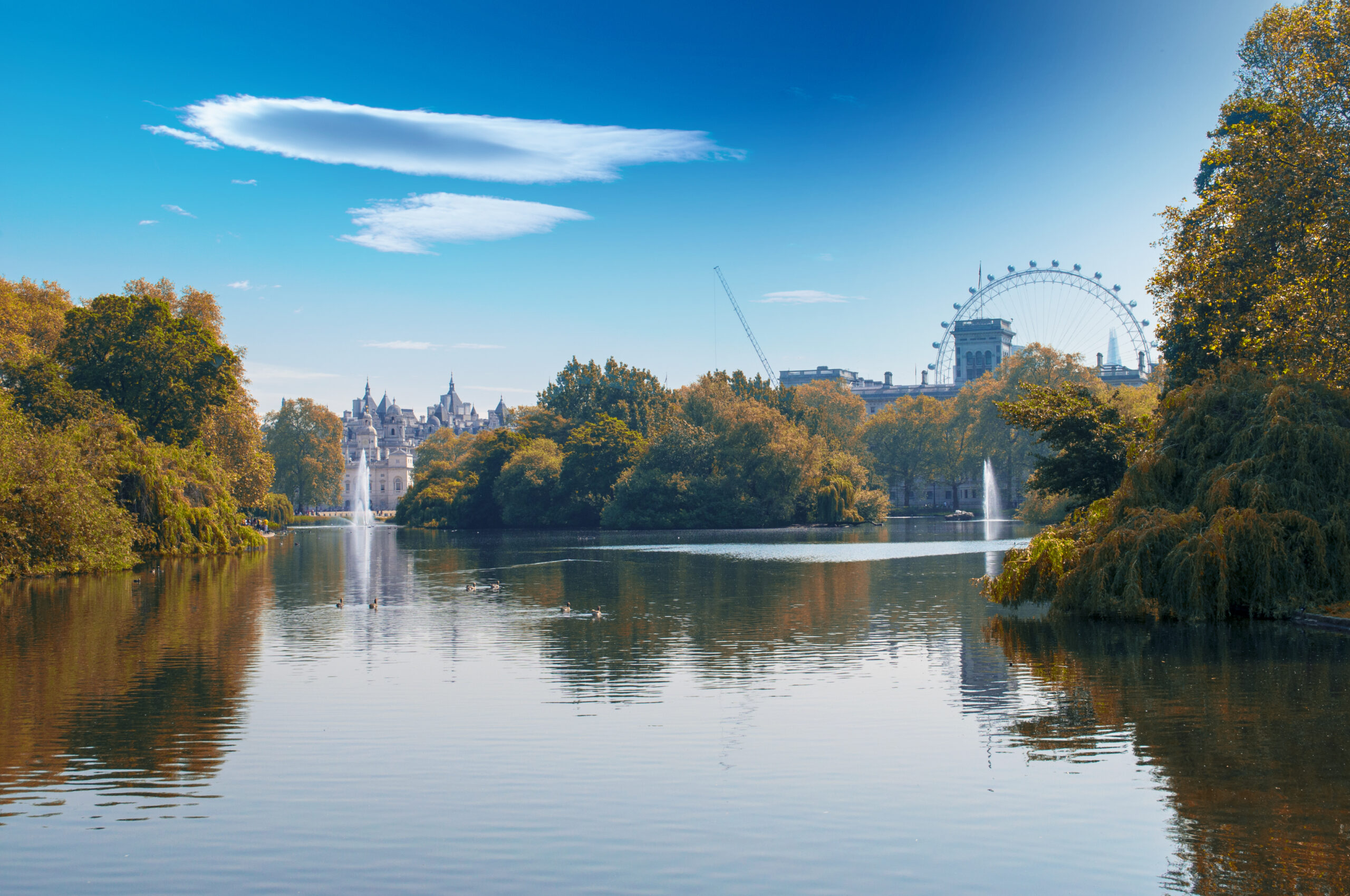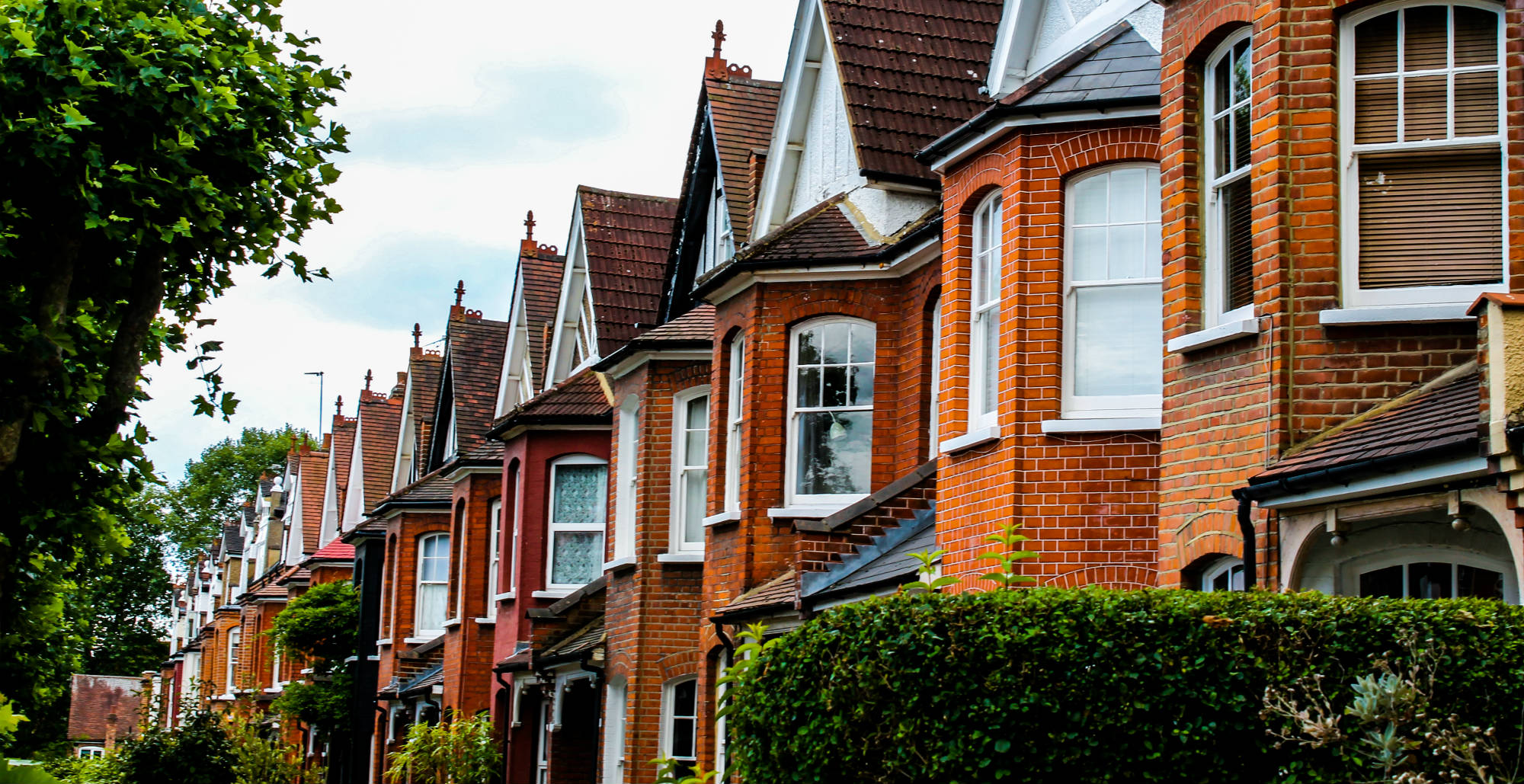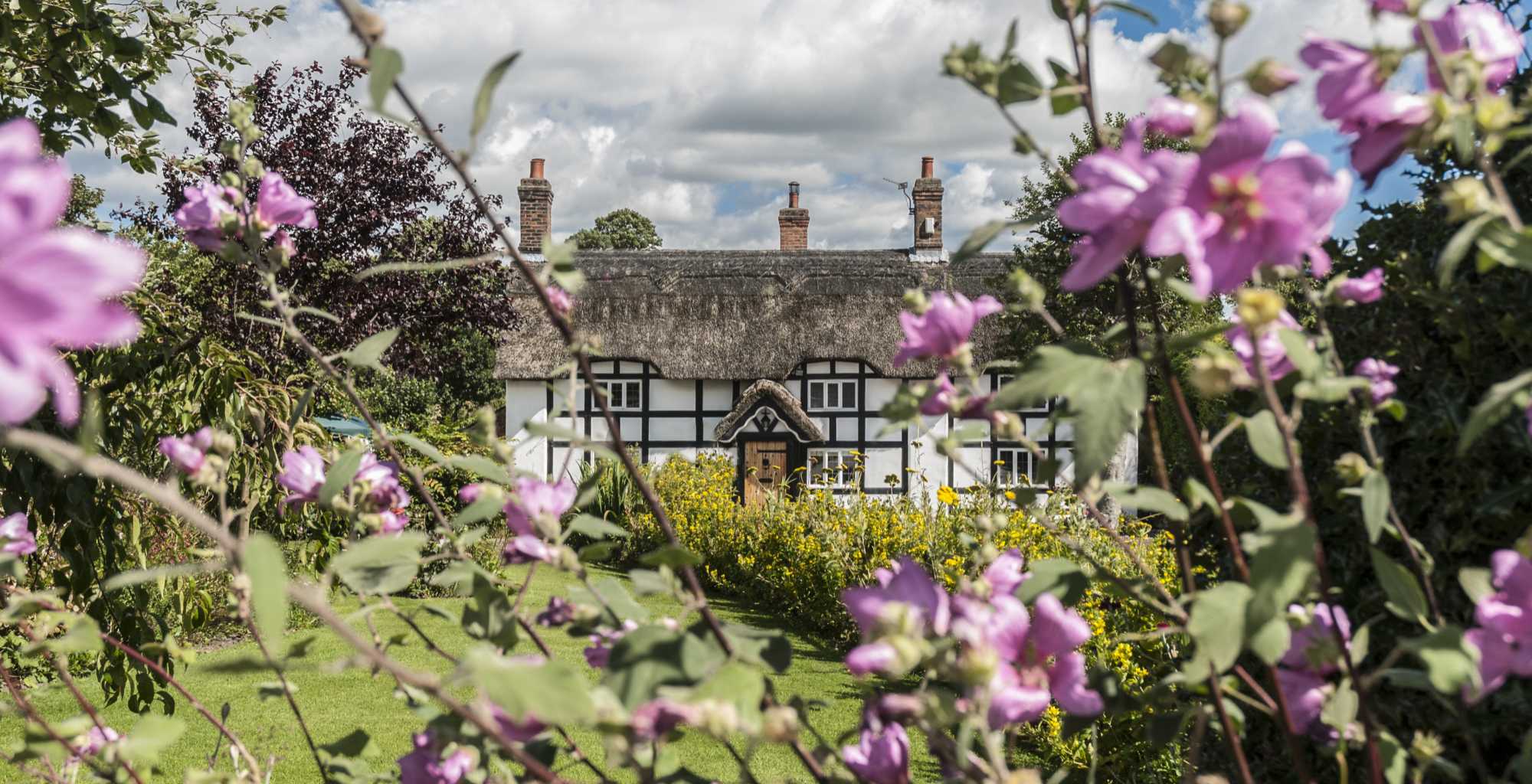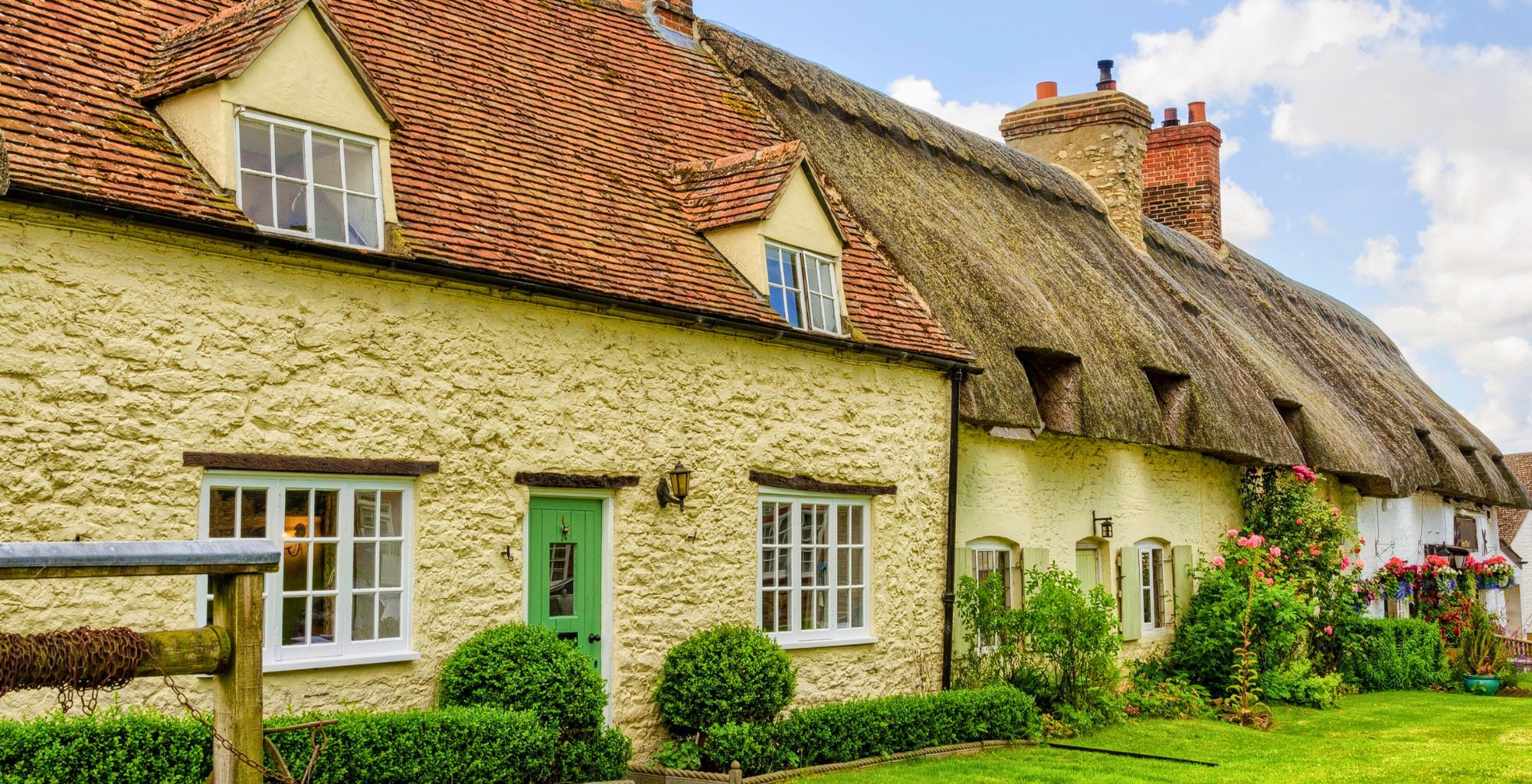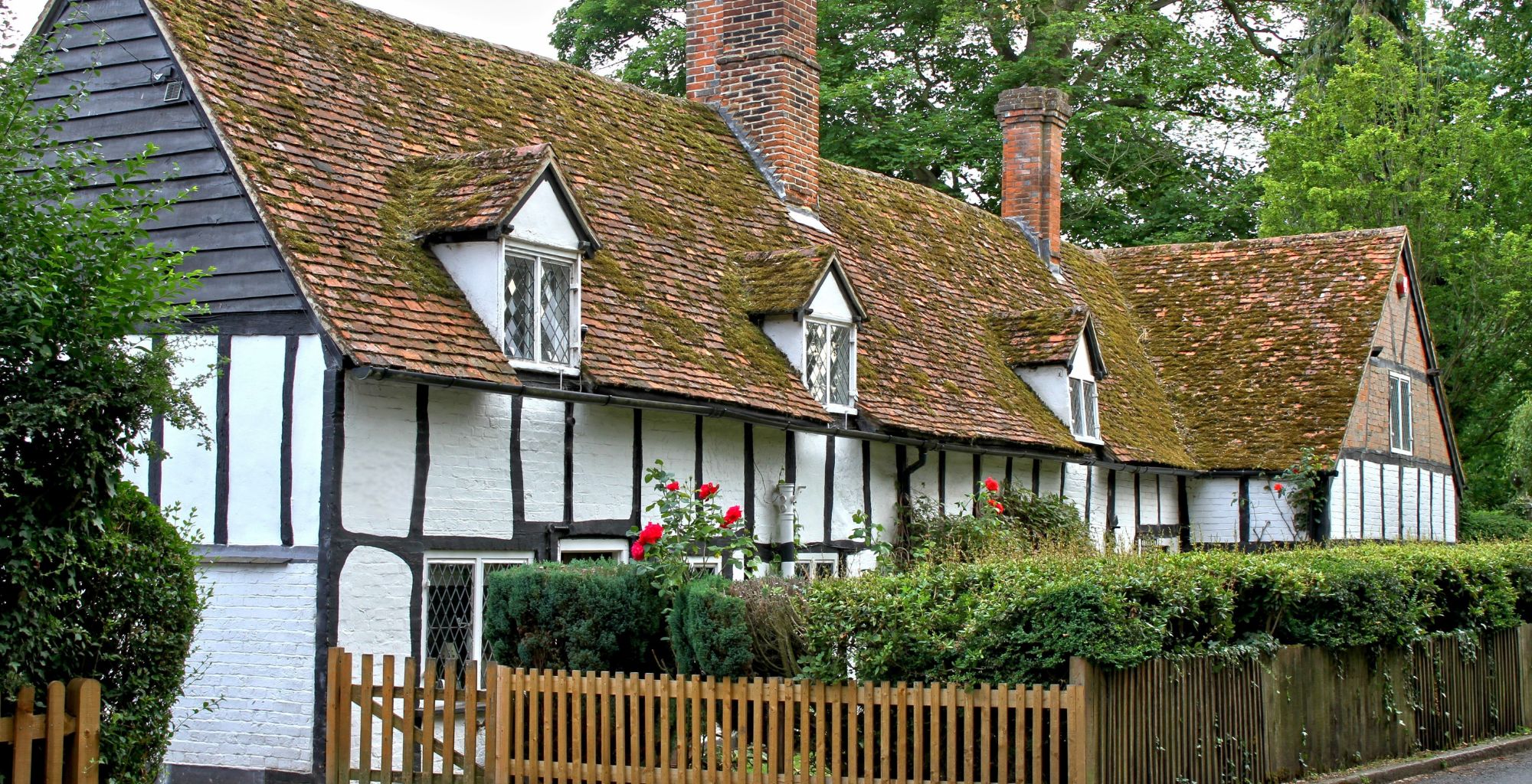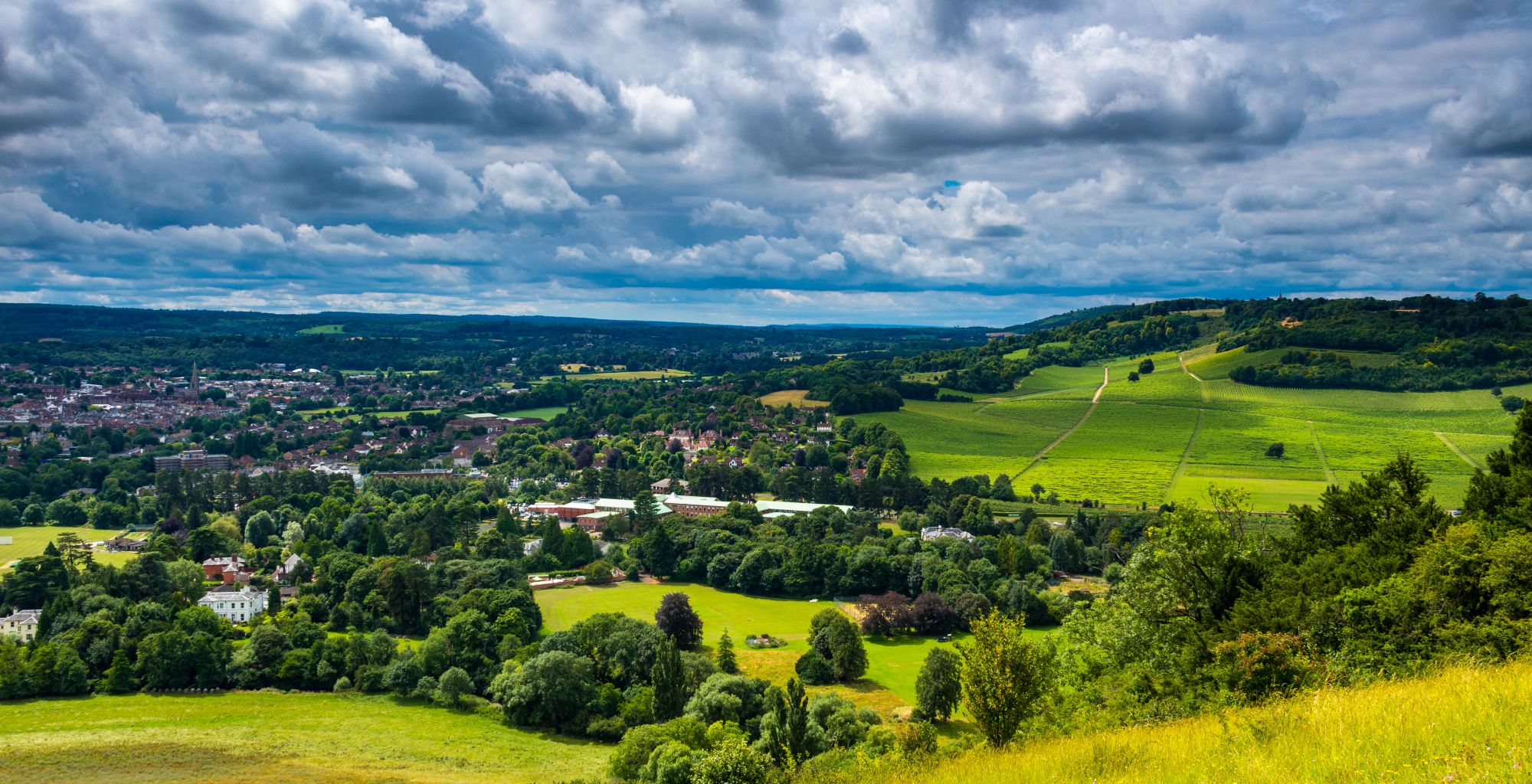Are you considering a move to the North West and want to know where the best places to live...
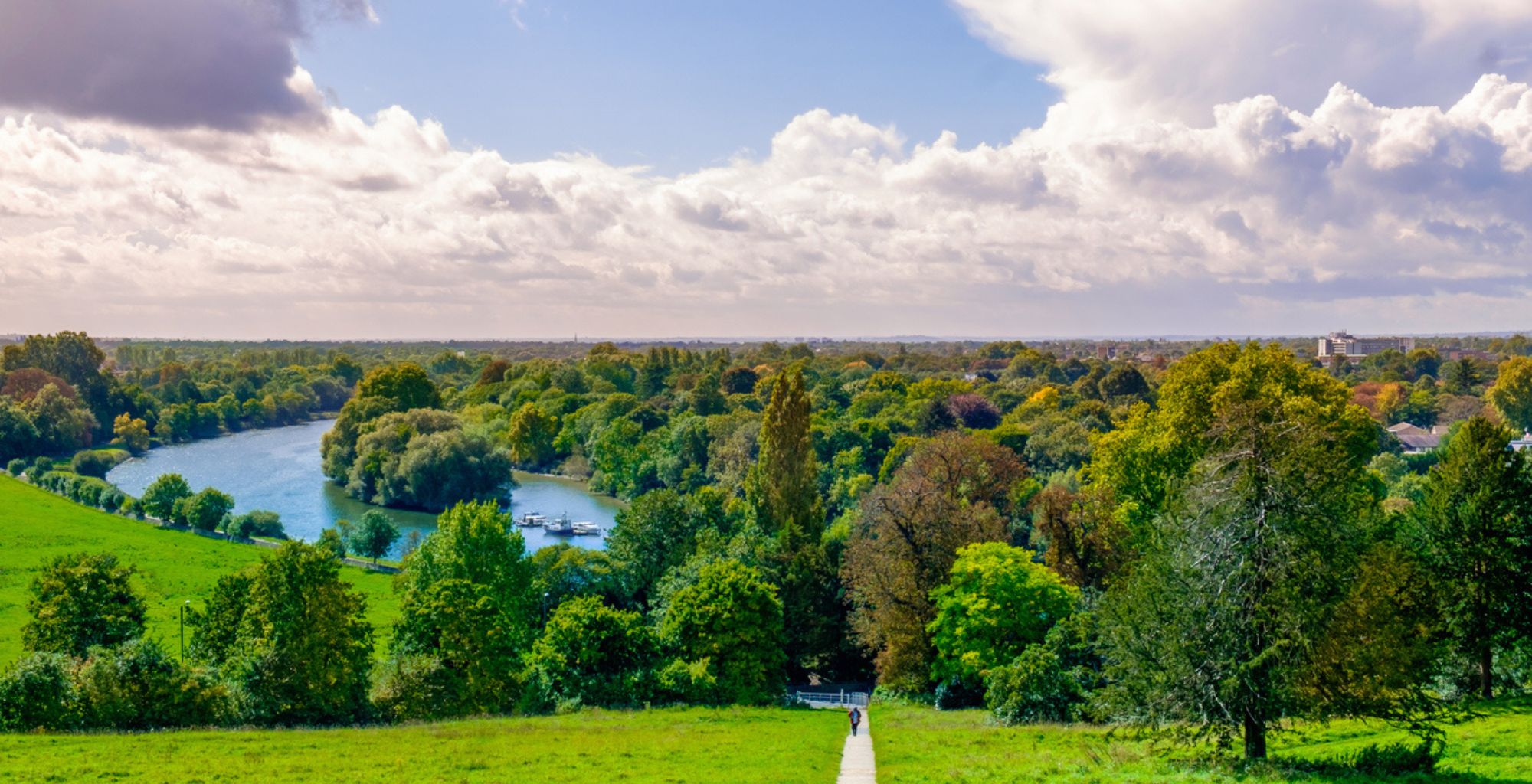
10 of the best London suburbs
There are several wonderfully leafy and peaceful places to call home that are within easy reach of central parts of the city, we highlight these here by rounding up 10 of the best London suburbs.
From riverside locations to those on the edge of forests, all within a short commute of central London, there are many places to live that offer a good balance in suburban parts of the capital.
Let’s take a closer look at 10 of the best London suburbs in which to live.
Richmond
Richmond boasts an almost idyllic combination of vistas along the Thames, leafy and green open spaces, eye-catching architecture, first-rate schools, and superb transport links, it is one of those rare locations to which residents move and seldom want to move away.
As a result, it harbours a strong and close sense of community – again, quite a rarity in an otherwise bustling capital – which is made all the more friendly as a “10-minute neighbourhood” where all your essential services are mostly a short walk away.
The river Thames is the lifeblood of the borough since Richmond straddles the river – the only London borough to spread across both banks. Its place in history is underscored by the majestic ancient oaks in the 2,500 acres or so of Richmond Park, where more than 600 red deer roam.
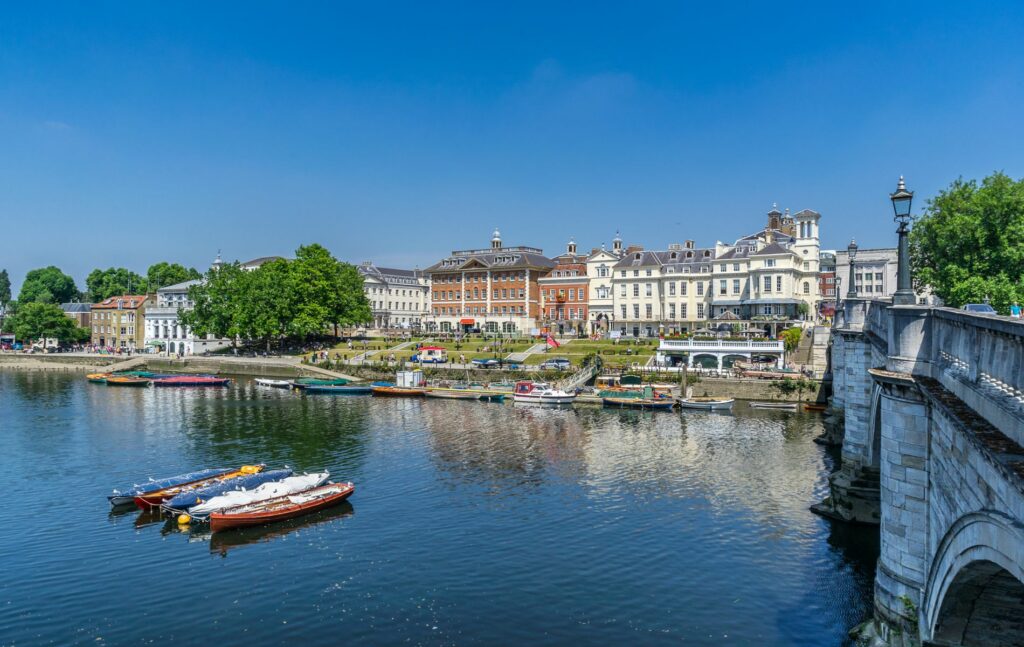
Why live in Richmond?
Here we explore key information about Richmond:
Amenities
Richmond’s full title is the Royal Borough of Richmond upon Thames and it is one of the most exclusive areas of the capital in which to live. Richmond has it all – fine houses, vibrant high streets, picturesque walks along the riverbank, excellent transport links, and the largest urban park in Europe (Richmond Park).
Education
Just half a mile away on the opposite bank of the River Thames are the excellent Deer Park School for ages 4-11 and Grey Court School, a public sector high school for ages 11-18. The independent day school for boys aged 11-18, Hampton School, is regarded as one of the best in the country.
Richmond is also home to another leading independent school for boys aged 7-18, St Paul’s School which was founded in 1509. The Old Vicarage School is Richmond’s only independent preparatory school for girls aged 3–11.
Transport links
Although Richmond’s position on the banks of the Thames lends it a leafy, semi-rural feel, it is only 11 miles from the heart of the capital’s financial district. Richmond also sits on the major trunk road, the A316, which leads onto the M3 motorway and all points to the New Forest and south coast of England.
Access to the M4 motorway is just a mile or two to the north and forms the Great West Road to Reading, Bristol, and South Wales. Heathrow Airport is 12 miles away, and London’s second airport, Gatwick, is 44 miles to the south.
Trains
Richmond is a terminus on the District Line of London’s Underground. It also has a mainline railway station with fast services to London Waterloo that takes less than half an hour. National rail services also run to Oxford via Clapham Junction to the entire Southwestern Trains network.
Wimbledon
Wimbledon probably means just one thing for anyone unfamiliar with London: the annual All England Lawn Tennis Championship.
For those who have grown to know and love the place, however, Wimbledon is far more than a yearly sporting fixture – it is a place to live, raise a family, go to work, rest, and relax.
Wimbledon is a wonderfully leafy London borough with a mixture of luxury homes that range from Grade II listed buildings to ultra-modern homes, with probably the most sought-after addresses around the wide-open space of Wimbledon Common.
Wimbledon is especially popular among those looking to raise a family in a green, leafy, and tranquil environment with some of the best parks and schools in London.
While the independent shops of chic Wimbledon Village will provide any local retail therapy, London’s bright lights, stores, and fashion houses remain only a few miles away.
The New Wimbledon Theatre has been a local cultural highlight for the past 100 years or so, while recent years have also seen the arrival of many restaurants and fine-dining establishments.
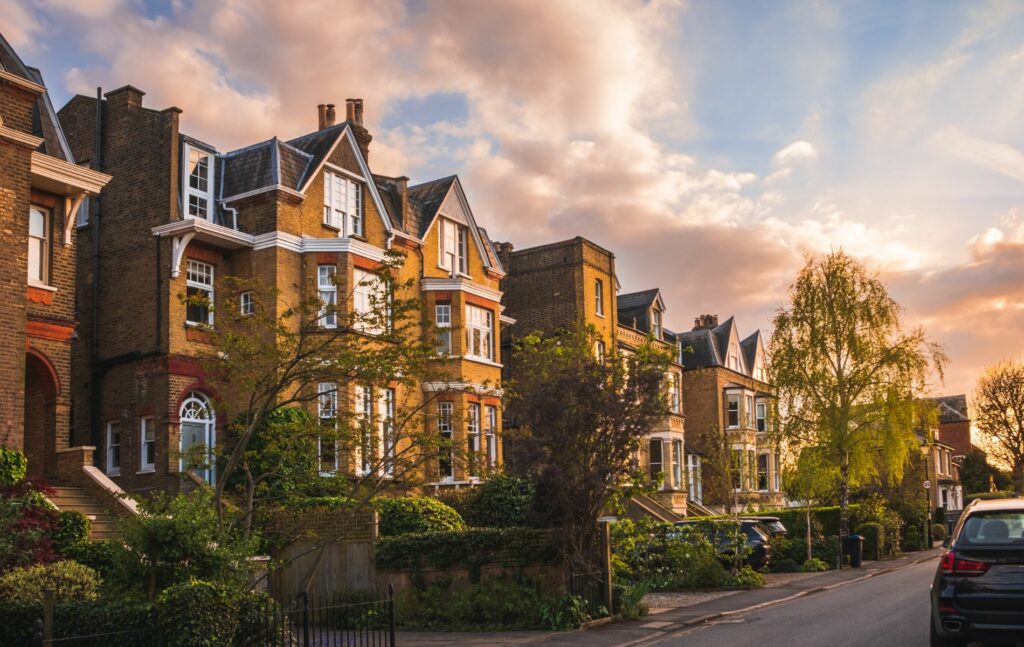
Why live in Wimbledon?
Here we take a look at what Wimbledon has to offer:
Amenities
Wimbledon Village gives every impression of being just that – a village with its streets lined with small independent, family-run shops and a community well served by doctors’ surgeries – both NHS and private.
The 1,140 acres of Wimbledon and Putney Common simply underline that sense of peaceful community that is so unlike the bustling metropolis on its doorstep.
Education
State primary schools in Wimbledon itself include Albemarle Primary School and Bishop Gilpin Church of England Primary School. Both are highly regarded, as is the all-girls state comprehensive Ricards Lodge High School.
There are two leading independent schools in Wimbledon – King’s College School for boys (sixth-form co-educational) and Wimbledon High School for girls.
Transport links
Contrary to the village atmosphere of Wimbledon, it is only 10 miles from central London and the heart of its commercial district. Wimbledon also sits alongside the main trunk route, the A3, which leads southwest to the commuter lands of Guildford in Surrey, and on to Portsmouth, on the south coast of Hampshire.
It is also a short distance south of the capital’s inner South Circular Road, which gives access to the main M4, to points west, and the circular M25. Heathrow Airport is some 28 miles away – a drive of around 45 minutes.
Trains
Wimbledon is a southwest terminus for London Underground’s District Line. Southwest trains also operate fast mainline commuter services (around 20 minutes or so) to London Waterloo or Poole on the Jurassic coast of Dorset (in 2½ to 3 hours).
Hampstead
Hampstead is a peaceful place to live, where luxury homes can be found around any corner.
Many have their privacy assured thanks to being set well back from the road or alongside the green expanse of Hampstead Heath.
As one of the leafiest and most tranquil parts of North London, Hampstead has long attracted writers, poets, artists, and celebrities of stage and screen.
Much of the area has a village atmosphere, such as the centuries-old Holly Bush Inn, which is a local favourite.
Hampstead Heath offers several opportunities for public bathing: Men’s Pond, Ladies’ Pond, and Mixed Pond. Meanwhile, at nearby Parliament Hill Fields, you can feast on some of the best views across London.
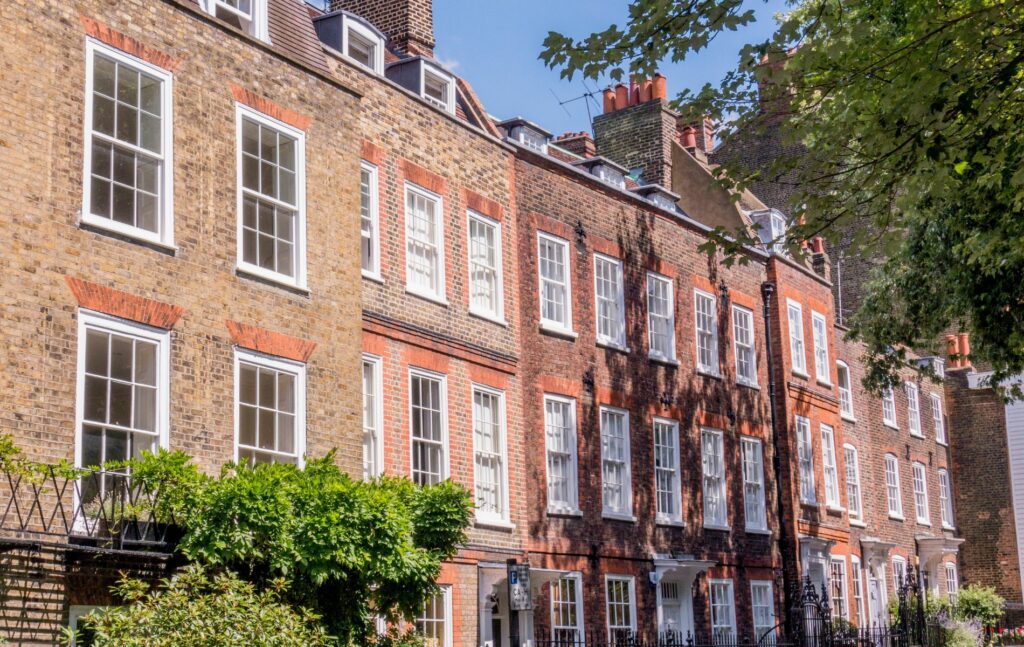
Why live in Hampstead?
Here’s what you need to know about Hampstead:
Amenities
Hampstead Village has the narrow, cobbled streets and small, independent shops you might find in any small English settlement – the difference is that Hampstead is barely five miles north of London’s busy Oxford Street.
One of the most desirable parts of North London, the village of Hampstead also boasts a cinema – the Everyman – and a theatre. There is also an NHS medical practice.
Education
There is a good local community primary school, Fitzjohn’s Primary School. Just two miles north of Hampstead Village, in Hampstead Garden Suburb, is the quality state grammar school for girls aged 11-18, The Henrietta Barnett School.
South Hampstead High School is a highly regarded independent day school for girls aged 4-18. Less than half a mile away is the leading University College School, a co-educational independent school for pupils aged 4-18. St Anthony’s School is a Roman Catholic school for boys aged 4-13 and welcomes boys of other faiths.
Transport links
Just a few miles north of Hampstead, the Finchley Road leads into England’s major north-south arterial motorway, the M1. This puts the UK’s second city of Birmingham, in the Midlands, just a 2½ drive away, Newcastle in the northeast 272 miles away, and Manchester 208 miles.
Heathrow Airport is just 18 miles away, along London’s inner ring road, the North Circular Road.
Trains
Hampstead is on London Underground’s Northern Line, between the stations of Golders Green to the north and Belsize Park to the south. The Northern Line links with mainline railway stations at both Euston in north London and Waterloo in the south – giving access to the entire rail network of the UK.
Highgate
Highgate enjoys handsome Georgian architecture, the open spaces of Primrose Hill, Hampstead Heath, Regent’s Park and the bustling markets of Camden Lock.
With its leafy, tranquil, and intimate village feel, Highgate is often twinned with its neighbour Hampstead, just across the Heath – indeed, those who live in the area affectionately call their local newspaper the “Ham and High” (Hampstead and Highgate Express).
One of the more unusual places for peaceful reflection is Highgate Cemetery – the final resting place of Karl Marx – and the neighbouring Waterlow Park, which was given to the public in 1889 as a “garden for the gardenless”. You can reach the gardens from Fitzroy Park – in your mind’s eye, no more than a lane in the country that happens to be bordered by some of the most expensive properties in the area.
Highgate could prove the ideal place in which to bring up your family, given the ready access to all-through independent schools of high standing.
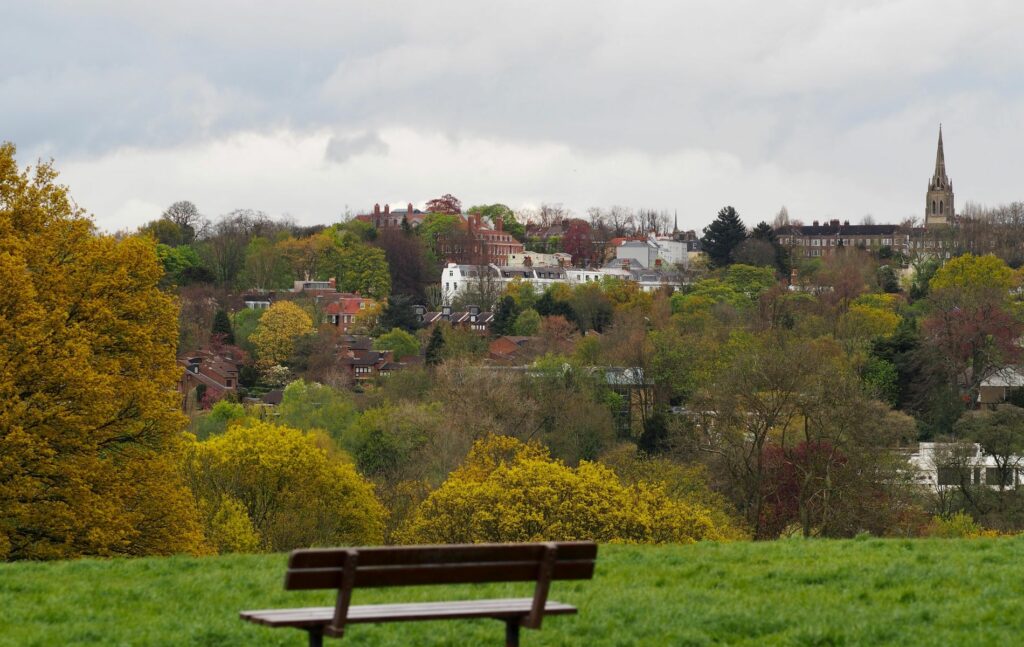
Why live in Highgate?
Here we highlight the key points about Highgate:
Amenities
On the opposite side of Hampstead Heath from Hampstead Village is its North London twin, Highgate – an exclusive and desirable place to set up home.
Highgate’s High Street is lined with small independent shops, boutiques, and bookshops in a laid-back atmosphere that has attracted its fair share of well-heeled celebrities, captains of industry, and City high-flyers. There are several NHS and private medical practices within Highgate.
Education
The state sector Highgate Primary School is well regarded, as is the local secondary Parliament Hill School for ages 11-18. Highgate School – a co-educational day school founded in 1565 for pupils aged 3-18 – is especially renowned in the independent sector, as is Channing School for Girls, teaching ages 4-18.
Transport links
Highgate sits alongside the major trunk road, the A1 or Great North Road, which in turn becomes the M1 motorway – the country’s main north-south arterial route. This puts the UK’s second city of Birmingham, in the Midlands, 115 miles away (less than a 2½ drive), Newcastle in the northeast 318 miles away, and Manchester 198 miles.
Heathrow Airport is approximately 20 miles away, along London’s inner ring road the North Circular Road.
Trains
Highgate is on London Underground’s Northern Line (Zone 3) between the stations at Archway and East Finchley. The Northern Line links with mainline railway stations at both Euston and Waterloo. From there, you can potentially access the entire rail network of the UK.
Crouch End
Unusually for some of London’s inner suburbs, Crouch End retains a distinctive personality.
Almost all its shops, restaurants, and cafes are independently owned – and with that comes a delightful, relaxed, and laid-back café culture.
One of the cultural landmarks is the faded glory of Alexandra Palace – affectionately known as “Ally Pally” – which was opened in 1873 and remains a Grade II listed building in the middle of 170 acres of entertainment and sporting events.
Crouch End is surrounded by smaller, more secluded, green spaces, such as Priory Park, Highgate Wood, Waterlow Park, Queen’s Wood, and Crouch End Playing Fields.
The relaxed and easy vibe of Crouch End, its proximity to central London (King’s Cross railway station is no more than a five or 10-minute Tube ride away), its many parks and open spaces, and some outstanding independent schools nearby make it a rapidly up and coming place to live in North London.
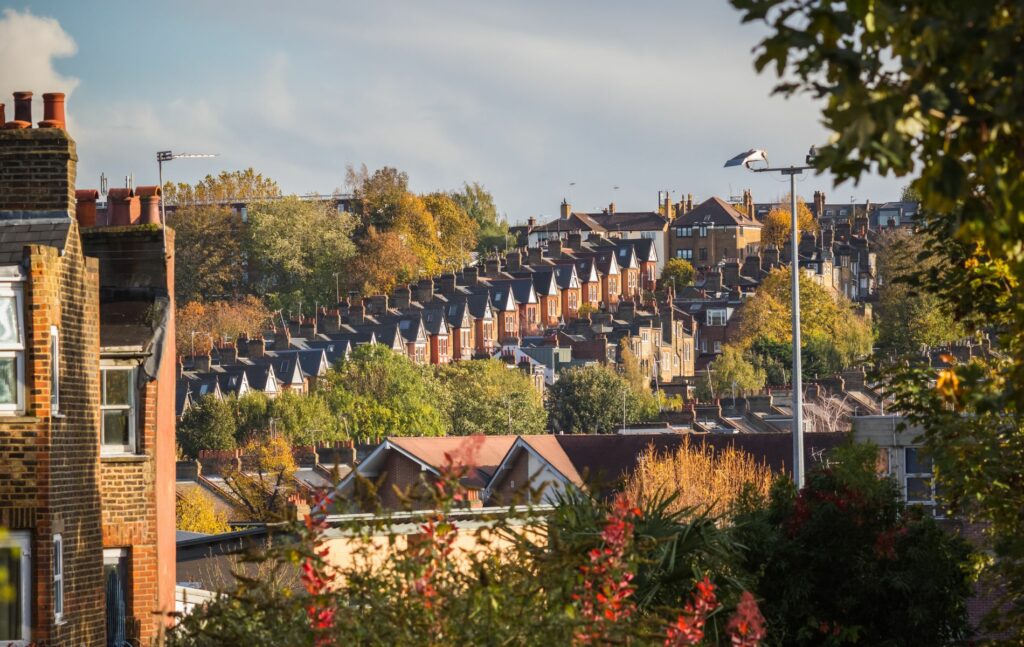
Why live in Crouch End?
Here we explore key information about Crouch End:
Amenities
Crouch End is, perhaps, one of the little-known up-and-coming communities of North London. It maintains a distinct neighbourhood feel of small, independent shops for everything from groceries, fruit and vegetables, boutiques, book shops, local arts centre, and restaurants.
Because it remains relatively undiscovered, unlike neighbouring Hampstead and Highgate, Crouch End avoids the steady streams of visitors and tourists – basking instead in the strength of its local sense of community.
Education
Approximately a mile and a half south of Crouch End, St Joseph’s Catholic Primary School, on Highgate Hill, offers a high standard of education, as does the state sector Academy Alexandra Park School for ages 11-18, just 3 miles to the north.
The comprehensive community Hornsey School for Girls is the only single-sex state school in the area. Leading independent schools close to Crouch End include Highgate School – a co-educational day school founded in 1565 for pupils aged 3-18 – and the equally renowned Channing School for Girls, aged 4-18.
Transport links
Crouch End is just 2 miles east of the major trunk road, the A1 or Great North Road, which in turn becomes the M1 motorway – the country’s main north-south arterial route. This puts the UK’s second city of Birmingham, in the Midlands, 117 miles away (less than a 2½ drive), Newcastle in the northeast, 319 miles away, and Manchester in 198 miles.
Heathrow Airport is approximately 21 miles away, along London’s inner ring road the North Circular Road.
Trains
Crouch End Railway Station (now disused) is a local landmark. The main overground station is at Crouch Hill for local services to Barking Riverside and Gospel Oak. Finsbury Park underground station (Zone 2) is just 2 miles south. It provides access to both the Victoria and Piccadilly Lines with fast services to Kings Cross and St Pancras International mainline railway station.
East Sheen
East Sheen offers the semblance of village life in a leafy setting, yet within a straightforward commute to central London or further afield from Heathrow Airport.
There are excellent independent schools – especially for girls – nearby.
At the same time, the wide-open spaces of Richmond Park or East Sheen Common (owned by the National Trust) offer plenty of opportunities for exercise and recreation.
East Sheen’s close neighbours – Barnes and Richmond – may have a more elevated cachet, but some would argue that East Sheen offers the closest you’ll get to country life near the very centre of London.
East Sheen is a very leafy area and has a real village feel to it, providing a rare haven of peace and quiet after a daily commute.
There are many different house types – with prices to match – and the most desirable locations are probably along Upper Richmond Road, towards the Park, East Sheen Common, and Palewell Fields.
An especially attractive cluster of homes near The Plough pub gives the area a distinctly rural feel.
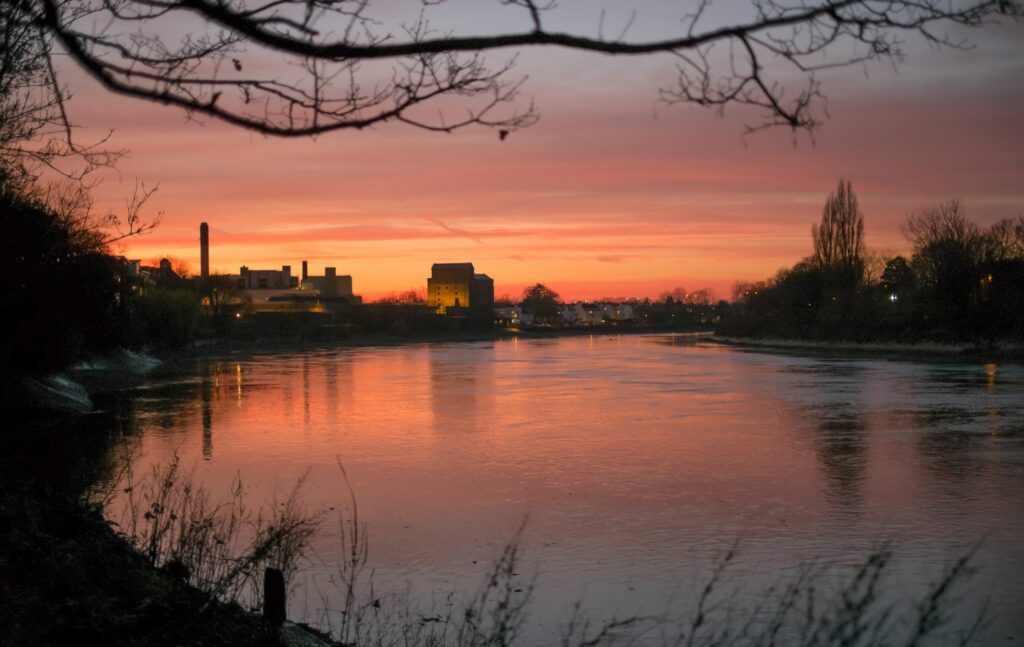
Why live in East Sheen?
Here we take a look at what East Sheen has to offer:
Amenities
East Sheen is right to describe itself as a village – its streets are fittingly lined with many independent family-run businesses, shops, restaurants, and boutiques. There are several NHS and private medical practices.
Education
Sheen Mount Primary School is well regarded, as is the local state secondary school, Richmond Park Academy for ages 11-18. In nearby Hammersmith is one of London’s leading independent schools for girls aged 11-18, the 175-year-old Godolphin and Latymer School.
Putney High School (commonly referred to simply as Putney) is another leading independent school for girls aged 4-18. The Harrodian, in nearby Barnes, is a relatively new but highly regarded independent, co-educational school for pupils aged 4 to 18. Tower House School has an 80-year-old history and is a preparatory school for 180 boys aged 4-13.
Transport links
East Sheen straddles London’s inner South Circular Road, which affords easy access to the west and northwest M3 and M4 motorways, respectively. East Sheen is approximately equidistant (9 miles) between central London and Heathrow Airport. The capital’s second airport, Gatwick, is some 34 miles to the south.
Trains
The mainline railway station is at North Sheen with fast Southwestern commuter services to London Waterloo and southwest to the south coast of Hampshire and Dorset. The central London mainline railway stations, of course, provide access to the whole of the national rail network.
Teddington
Teddington is one of the most popular of London’s inner suburbs – one that is particularly popular among families who will appreciate its picturesque riverside location, surrounding parkland, and excellent state and independent schools.
Enjoying a location along an especially long stretch of the west bank of the Thames – all the way from just north of Teddington Lock to Kingston Bridge in the south, those riverside walks give Teddington an immediately intimate sense of community.
The leafiness of Teddington is underscored by the 1,000 acres or so of Bushey Park – the second most expansive of all London’s Royal parks.
There is also a vibrant lifestyle to be enjoyed among the shops, stores, boutiques, restaurants, and cafes of Teddington High Street – before you might feel like retiring to the watering hole that is the riverside’s Anglers pub.
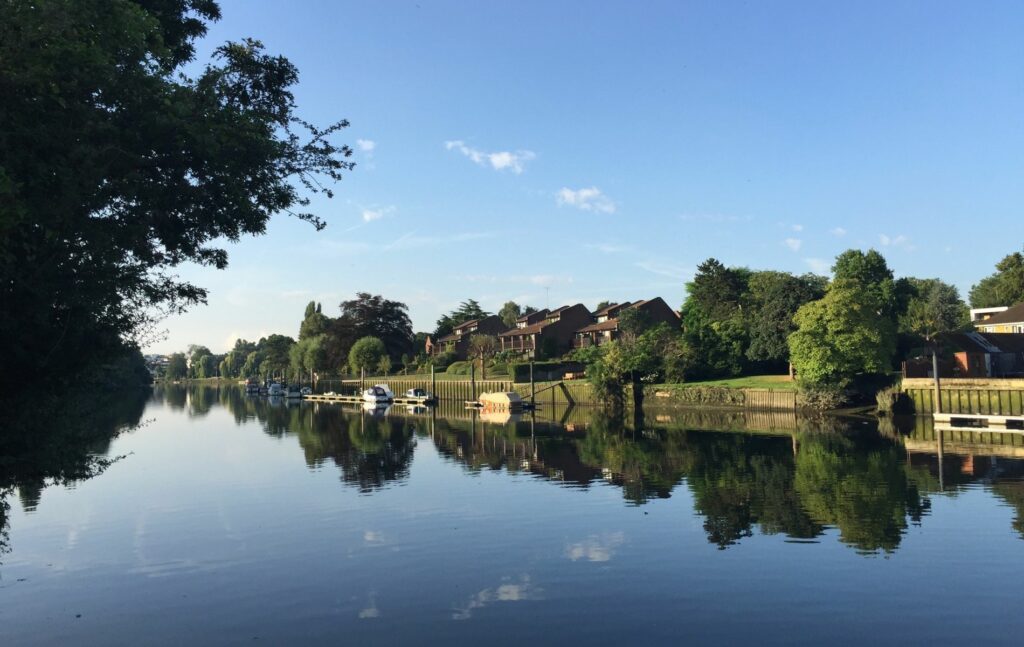
Why live in Teddington?
Here’s what you need to know about Teddington:
Amenities
The Times newspaper has voted Teddington as one of the best places to live in 2022. It’s not just the glorious parks and riverside walks along the river Thames but a quaint high street that retains a village feel with shops that range from the niche but modest and independent to the downright classy and chic. You will also have GPs in private practice or the NHS.
Education
Twickenham – less than 2 miles away – has at least three highly rated primary schools. Also highly regarded, is the boys’ grammar school for ages 11-18, Tiffin School in nearby Kingston upon Thames, as is Waldegrave School for Girls of ages 11-18 in Twickenham.
Among the many leading independent schools in the area are the co-educational Kingston Grammar School and St Catherine’s School for Girls in Twickenham.
Transport links
Teddington is just a mile or two to the south of the main M3 motorway, which leads southwest to Southampton, the New Forest, and the coastal resorts of Hampshire and Dorset. The M3 also intersects the London orbital M25 motorway, making easy access to the country’s motorway networks.
Central London is approximately 13 miles by road (a driving time of around 47 minutes). Heathrow Airport is just 6 miles to the northwest (a drive of roughly 15 minutes), and Gatwick Airport is some 30 miles to the south – a drive of around 45 minutes.
Trains
From Teddington’s mainline railway station, there are regular fast trains to London Waterloo – average journey times between 30-45 minutes – making it an ideal commute.
Crystal Palace
Crystal Palace has recently become one of the trendiest places to live in London.
The Times newspaper crowned Crystal Palace the best place to live in London in 2022.
Perhaps because it was previously overlooked for so long, Crystal Palace has a fascinating history, a strong sense of local community, and a fierce pride in its standing among the sought-after places in which to live in South London.
There is no shortage of independent shops, restaurants, and cafes, while the views from the high ground of Crystal Palace Park take in landmarks such as the Shard, the Gherkin, and St Paul’s Cathedral in the heart of central London. Crystal Palace is so well connected.
It’s not just well connected; Crystal Palace also has close to its heart some of the very best state and independent schools in South London.
Little wonder this is fast becoming one of the most sought-after locations to build a family home.
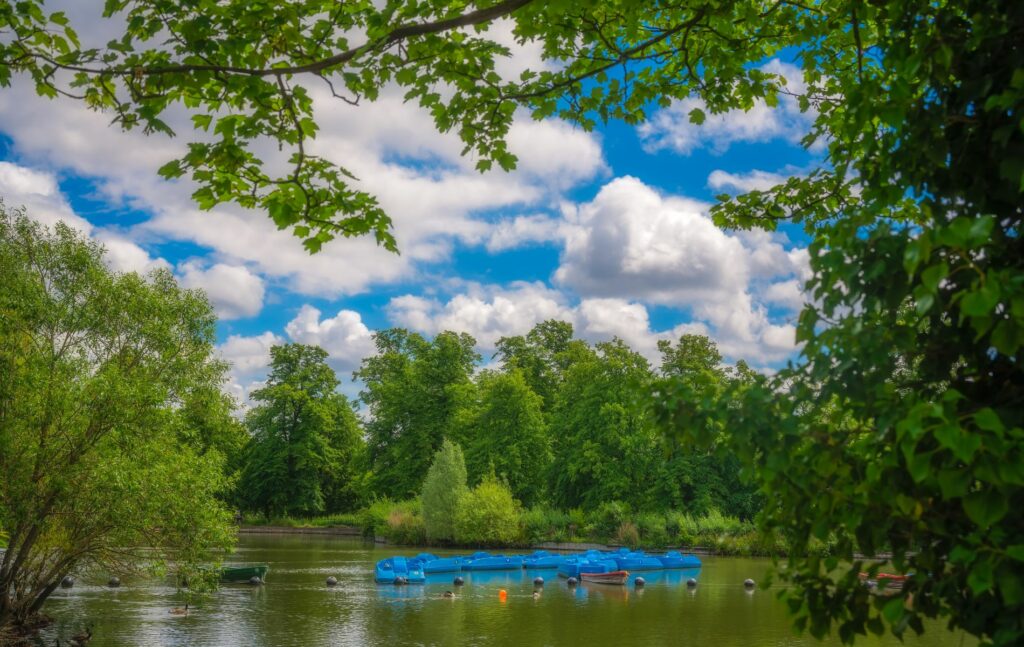
Why live in Crystal Palace?
Here we highlight the key points about Crystal Palace:
Amenities
What gives this South London community much of its character is the absence of large retail chains and the predominance of independent, family-run shops and boutiques. These are grouped mainly around the Triangle formed between Westow Street, Westow Hill, and Church Road, along with the shops, restaurants, and cafes on Anerley Road.
There are numerous NHS and private medical practices – some of which specialise in sports injuries (because of the proximity of the National Sports Centre).
Education
Less than 2 miles away, just the other side of Crystal Palace Park, in Sydenham, is Eliot Bank Primary School for ages 4-11. Less than 3 miles to the east, near Streatham, is the state secondary Dunraven School, an Academy for pupils aged 11-18. Both schools offer a high standard of education, as does Bishop Thomas Grant Catholic Secondary School.
In the independent sector, by far the most iconic public school is Dulwich College, for boys aged 2-19, founded in 1619.
Transport links
Crystal Palace lies just a few miles south of London’s main inner ring road, the South Circular, which gives easy access to routes to the south, southwest, and east. The principal trunk road due south leads to Brighton, but connections with London’s orbital M25 bring the entire national motorway network within easy reach.
Gatwick Airport is easily reached via the M23 motorway in approximately 40 minutes by road, while Heathrow Airport is a similar distance away to the north.
Rail
Overground rail services from Crystal Palace station reach London Victoria in around 30 minutes – making this an especially attractive commute into the capital’s centre.
Forest Gate
Forest Gate gets its name as the one-time southern entrance to the huge expanse of Epping Forest.
The borders of the Forest are now some 11 miles to the north, but this has not detracted from this suburb’s strategic location.
That has been boosted considerably by the development of London’s major Crossrail project, which puts Forest Gate on fast-track train lines further east but more crucially west to Heathrow and as far as Reading, in Royal Berkshire.
That strategic location is made even more attractive by the proximity of the green, open spaces of Wanstead Flats a little to the north. Plus, the sports opportunities that continue to exist on the site of the Queen Elizabeth Olympic Park.
Forest Gate remains a primarily residential area and retains some stunning, double-fronted detached properties among the more common terraced and semi-detached housing built in the Victorian era.
The local high street is Green Street, an especially diverse part of the area and home to many Middle Eastern and Indian restaurants and, Asian clothes shops.
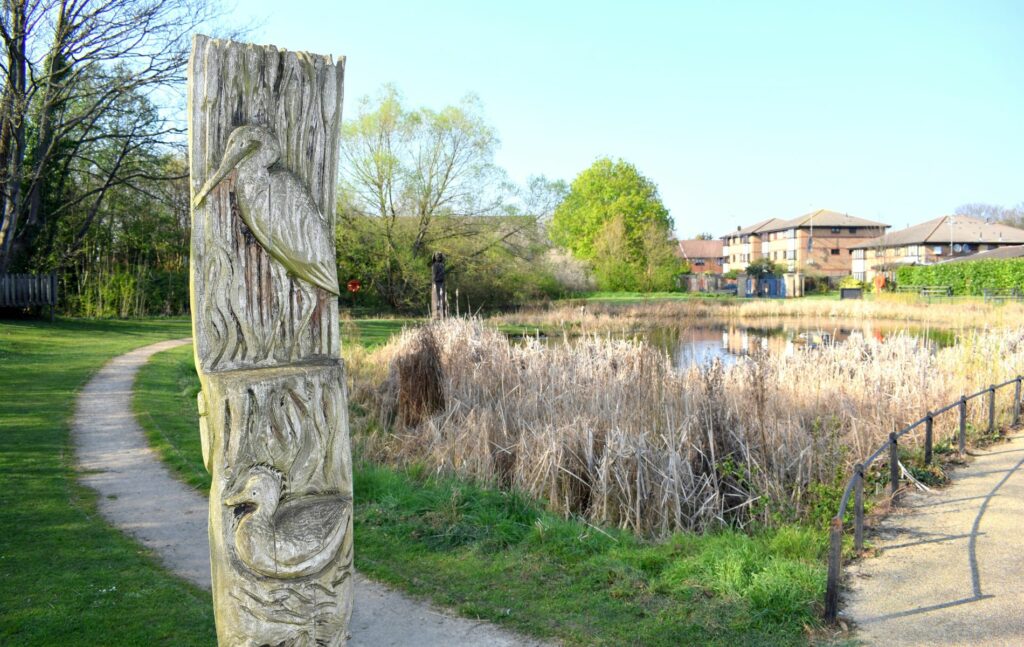
Why live in Forest Gate?
Here we explore key information about Forest Gate:
Amenities
Some might say there’s little to set this East London community apart from its neighbours – but recent years have seen a blossoming of its fortunes.
Thanks to Crossrail and the proximity of the Olympic Park and Westfield Shopping Centre, shopkeeping in Forest Gate has taken on a new and revived life of its own – the high street goes by the name of Green Street. There are both NHS and private medical centres.
Education
Just 2 miles away, on the edge of Wanstead Park, Aldersbrook Primary School for ages 3-11 is highly rated, as is the state sector’s Brampton Manor Academy, for ages 11-18, 3 miles down the road in Plaistow. The independent, co-educational Forest School for ages 4-18 is highly regarded and just 4 miles or so to the north, near Wanstead Park.
There are also several Islamic schools in the area, including the leading Azhar Academy for girls.
Transport links
Forest Gate is in the heart of East London’s conurbation of suburbs, with several main routes leading to the UK’s major road networks. Probably the most important of these is the 11 miles due north, via Walthamstow, to Waltham Abbey, where London’s orbital M25 motorway bisects Epping Forest.
London City Airport is approximately 4½ miles (or a 20-minute drive) from the centre of Forest Gate and serves multiple destinations throughout the UK and Europe.
Trains
Forest Gate’s position on the Elizabeth Line makes it an exceptionally convenient place to live. Trains run to Abbey Wood in the southeast and Reading, in the Thames Valley, in the west, providing fast and frequent services to London Paddington and Heathrow Airport.
Forest Gate mainline railway station also offers fast services (approximately 15 minutes) to London Liverpool Street. The nearest London Underground station is at Upton Park, Zone 3 on the District and Hammersmith and City lines.
Finchley
With larger, spacious, and often picturesque homes and strong schools, Finchley is an attractive suburb of northwest London and is very desirable.
It has quiet streets which are great for families looking for a safe, quiet neighbourhood. Yet it is still close to everything, with its great transport links.
The bright lights, shopping, theatres, and restaurants of central London can be accessed either by road or underground – yet Finchley remains far enough away to retain a distinctive character of its own and welcome greenery spaces for peaceful relaxation.
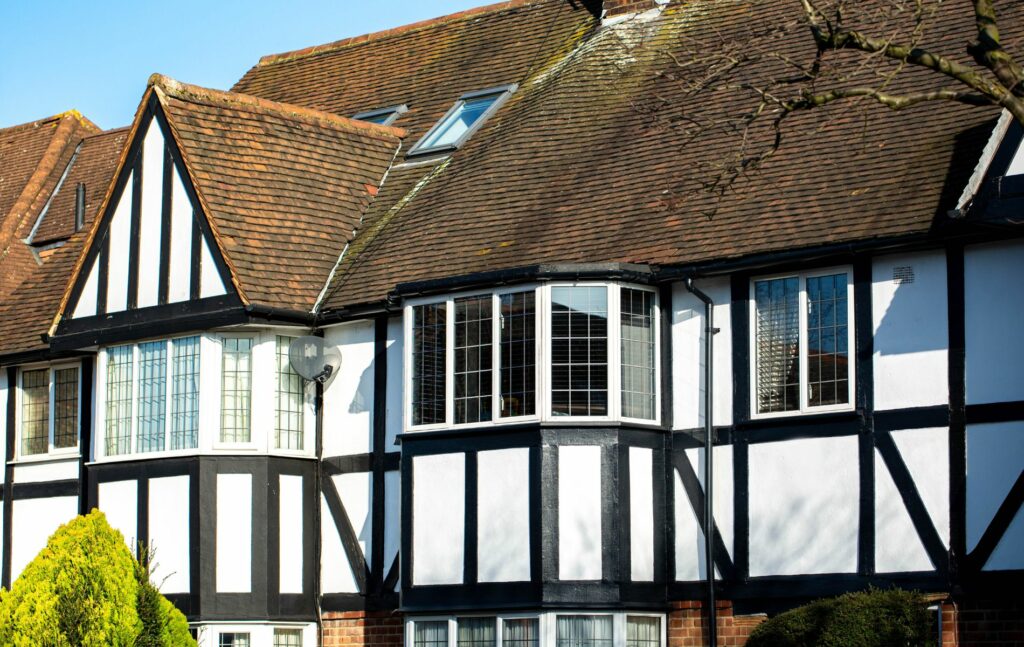
Why live in Finchley?
Here we take a look at what Finchley has to offer:
Amenities
Because it covers such a large area, predominantly residential Finchley boasts at least three shopping areas, centred on Finchley Church End, East Finchley, and North Finchley.
If you cannot find what you are looking for in any of these, then the big Brent Cross Shopping Centre is right on your doorstep – while the likes of Oxford Street and Tottenham Court Road are only a short Tube ride away. Finchley boasts many private and NHS medical practices.
Education
Several primary schools for ages 4-11 in this area are highly regarded, as are Fortismere School and St Michael’s Catholic Grammar School in North Finchley. The twin secondary schools for children from Orthodox Jewish families, Hasmonean High School for Boys and Hasmonean High School for Girls, also offer an excellent standard of education.
Mill Hill School for ages 13-18 is probably the most famous independent school in the area and just 3 miles or so to the north, but there is a wealth of leading independent schools across the northern suburbs of London.
Transport links
Finchley sits close to London’s inner orbital North Circular Road and is close to its intersection with the major north-south M1 motorway and – via the circular M25 – M4, M40, and M3 motorways. It is strategically placed to access the entire motorway network of the UK.
Central London is only 10 miles by road – a driving time of around 40 minutes (depending on the traffic).
Trains
Thameslink provides local overground rail services, but most journeys will be made via Finchley Central Northern Line Underground (Zone 4) or the Line’s additional stations within the area. For example, the journey time to London’s Euston station is around 17 minutes.
10 of the Best London Suburbs
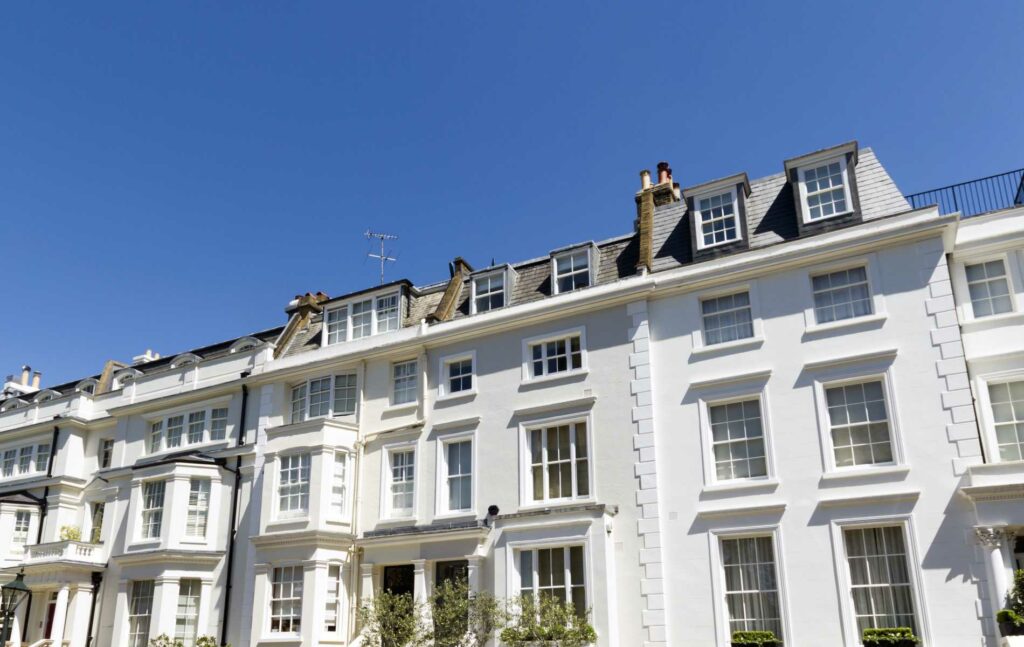
As property finders, we often advise clients on the finest places to live in London based on their requirements.
These 10 London suburbs are amongst the very best places to live in the capital.
Garrington would be delighted to assist you in your search for a home in any of these sought-after London suburbs.
Please do get in touch with one of our team to discuss your needs.
